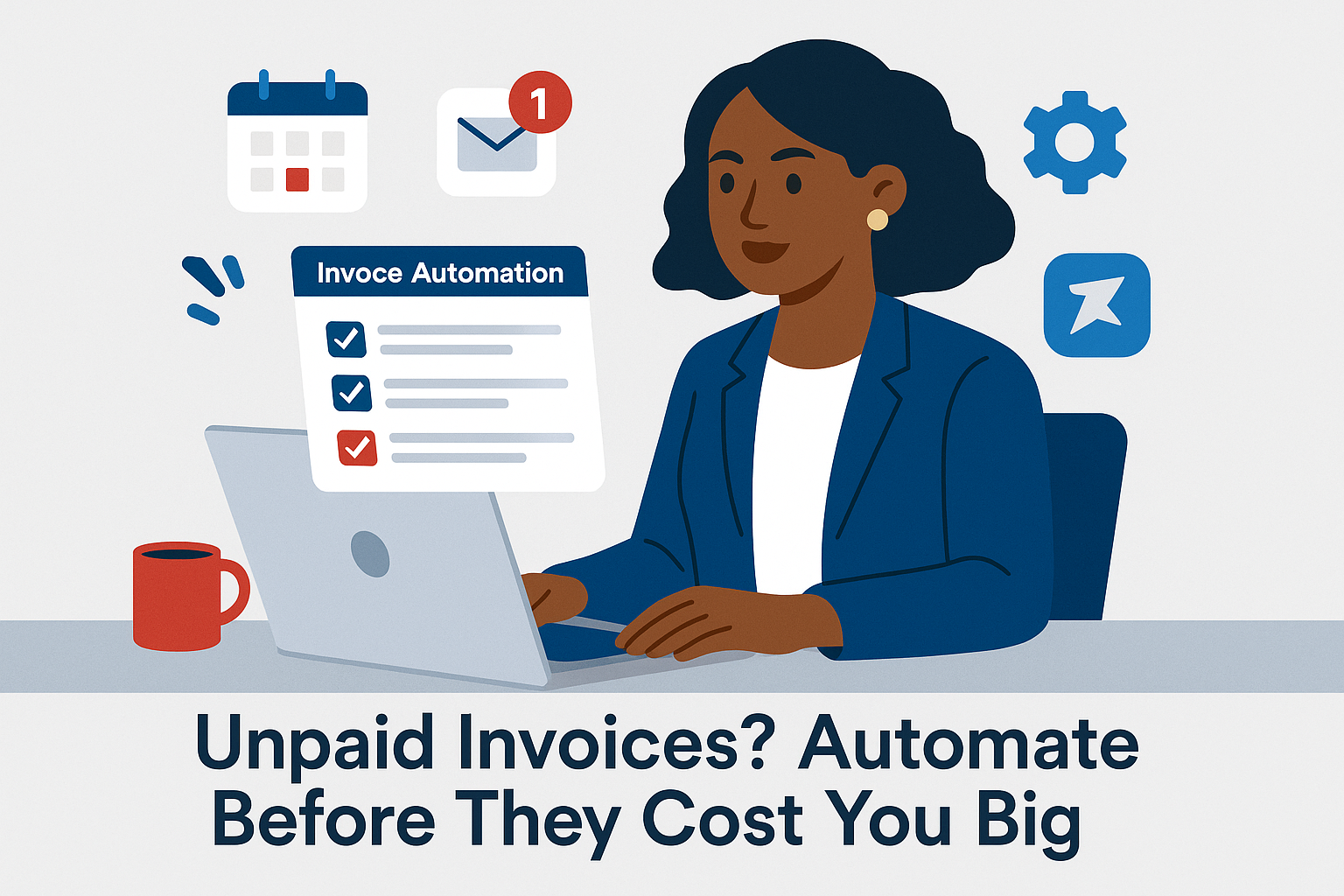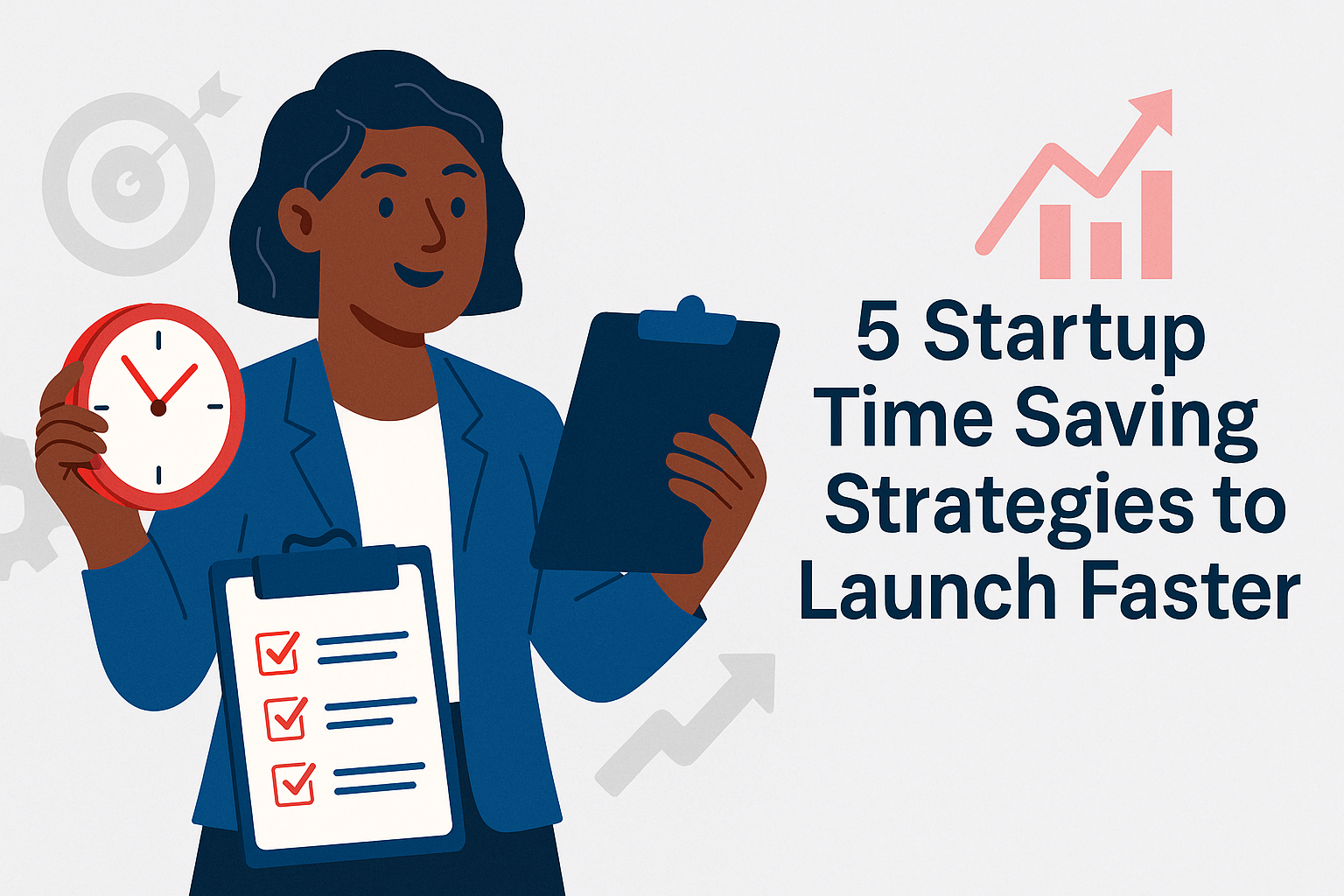Workflow Wednesday
Time-Saving Automations aren’t just about moving faster—they’re about making space for the work (and life) you actually care about. When you’re running a business alongside a full-time job, every hour matters. And yet, so much of that time disappears into the same small, repetitive tasks: typing the same email again, confirming appointments manually, or updating spreadsheets late at night. I know, because I used to do all of that too. The day I replaced even one of those tasks with a simple automation, I gained hours back in my week—hours I could spend planning, resting, or finally tackling the projects that would actually move my business forward.
And here’s the thing—those hours are already hiding in your schedule, waiting to be freed. Once you start using automations that work quietly in the background, you’ll wonder how you ever managed without them. Let’s talk about how to set them up so they save you time starting this week.
Why Time-Saving Automations Matter

For most side-business owners, the real challenge isn’t skill or ambition—it’s capacity. You might have the expertise to deliver incredible results, but if your time is being eaten up by low-value tasks, you never get to focus on the work that grows your business. That’s where automation comes in. It’s not about replacing you. It’s about creating a system that supports you so you can focus on the tasks only you can do.
I learned this when I first automated my client intake process. What used to take me an hour or more per client, sometime full afternoons and days for multiple clients, was suddenly happening in the background, without my constant attention. The relief wasn’t just about getting time back—it was knowing I wouldn’t drop the ball on follow-ups or miss an important detail because I was stretched too thin.
If you’ve been feeling like there’s never enough time to get to the work that truly matters, automation is your opportunity to change that—without working later nights or sacrificing weekends.
Identify Your Time Drains
Before you can set up time-saving automations, you need to know exactly where your time is going. It’s easy to feel like you’re being pulled in a hundred different directions, but when you track your tasks for a few days, patterns emerge. Often, it’s not the big projects slowing you down—it’s the small, repetitive actions you hardly notice anymore.
Look for tasks you:
Repeat more than once a week.
Can explain in clear, step-by-step instructions.
Feel frustrated doing because they keep you from higher-value work.
For example, you might be:
Sending the same “welcome” email to each new client.
Manually confirming appointments.
Copying data from one system into another.
Following up on overdue invoices by hand.

Choose just one of these tasks to start with. Trying to automate everything at once can lead to “tool overload” and end up costing more time than it saves. By focusing on a single high-impact task, you can see results quickly—and use that momentum to tackle the next one.
If you’re not sure where to begin, start by paying attention to the moments when you think, I can’t believe I’m doing this again. That’s your signal that it’s a perfect candidate for automation.
Simple Automation Wins
Once you’ve spotted a clear time drain, the fastest way to build momentum is to automate it in a simple, low-cost way. You don’t need an elaborate tech stack to start—often, the right tool in the right place is all it takes to free up hours.
Here are a few easy wins to consider:
Email templates – Save prewritten responses for common inquiries so you can reply in seconds instead of typing from scratch. Most email platforms have built-in template features.
Appointment scheduling tools – Use an online scheduler to handle booking, rescheduling, and reminders without back-and-forth emails.
Invoice automation – Set up recurring invoices or payment reminders in your accounting software so you’re not chasing payments manually.
The best part is that many of these can be set up in under 15 minutes. Even one small automation can save you more time than it takes to create it—and that time keeps paying you back every week.
If you’re not sure which tool to try first, look for one that integrates easily with what you’re already using. That way, you’ll avoid adding complexity and can keep building a system that feels seamless instead of scattered.
Building a System That Grows With You

The goal is to design your automations as part of a bigger system. Think about how each tool will connect to the next step in your workflow. For example, when a client books an appointment, does that automatically update your calendar, send a confirmation email, and trigger any prep work you need to do? When these pieces work together, you’re not just saving time—you’re building a smooth, repeatable process that supports you as your business grows.
Personally, I use Zoho One because it allows me to keep multiple tools—email marketing, forms, CRM, accounting—under one roof. I’m not suggesting it’s the only way to go, but having that level of integration means my automations can connect without relying on a patchwork of third-party connectors. Whether you use an all-in-one platform or several best-in-class tools, the key is making sure they talk to each other.
Start small, but think long-term. Choose tools that can scale with you and integrate with others you may add later. This way, you’re not constantly switching platforms or rebuilding processes from scratch every time your needs change.
If you’ve ever felt like you outgrew a tool too quickly, it’s a sign to be more intentional about how your systems fit together. The right setup should feel like it’s working alongside you, not holding you back.
The Mindset Shift
Time-saving automations aren’t just a technical upgrade—they’re a leadership decision. When you build systems that handle routine work for you, you’re stepping into the role of a business owner who designs how the business runs, instead of one who reacts to every task as it comes in.
This shift can be uncomfortable at first, especially if you’re used to doing everything yourself. You might even feel like you’re letting go of control. But the reality is, you’re gaining control—over your time, your focus, and your energy. The work still gets done; it just doesn’t require you to be the one doing it every single time.

Think of it this way: every automation you put in place is like hiring a reliable team member who works 24/7, never asks for a day off, and never forgets a step. That “team member” frees you to spend more time on the decisions and projects that actually move your business forward.
If you’ve been hesitating to automate because it feels impersonal or “too soon,” consider this—automation isn’t about replacing the human touch; it’s about giving you more space to bring it where it counts.
Imagine your business six months from now, running with automations in place that free up your time and energy for building new offers, deepening client relationships, or finally taking that afternoon off without guilt. What do you need to do this week—today—to map out your first process and create your first automation?
Take the Next Step in Time-Saving Automations
If this post sparked ideas about where time-saving automations could work in your business, don’t let those ideas fade. The best time to start designing a system that supports you is before you’re stretched to the breaking point.
Join my mailing list and get practical, actionable strategies you can use to reclaim your time without sacrificing the quality of your work. You’ll receive insights and tools I reserve for subscribers—resources that help you identify the right processes to automate, choose the tools that fit your workflow, and put them into action so they actually save you time.
Sign up here to start building a business that runs with you—not on you.






